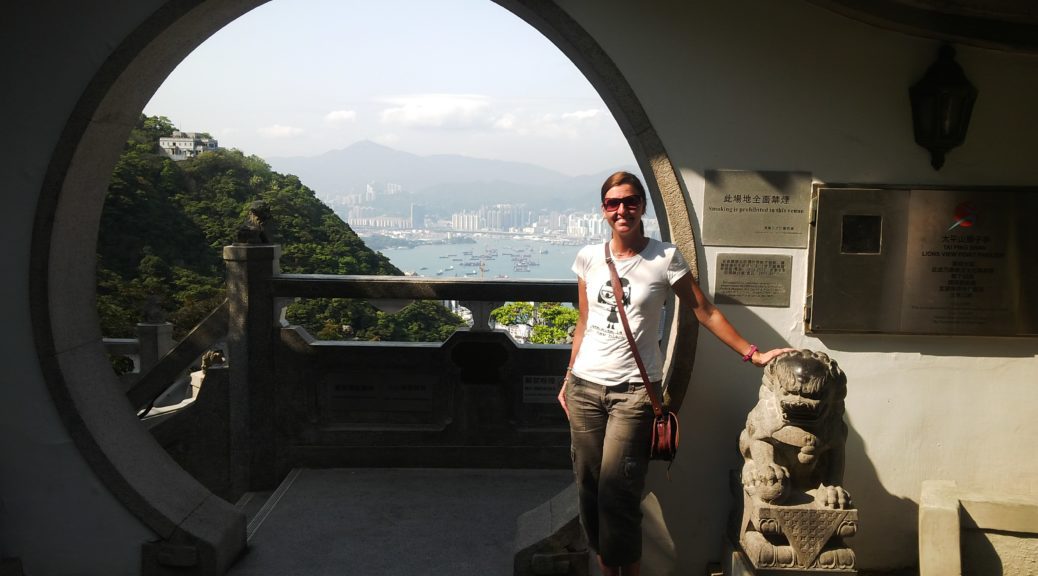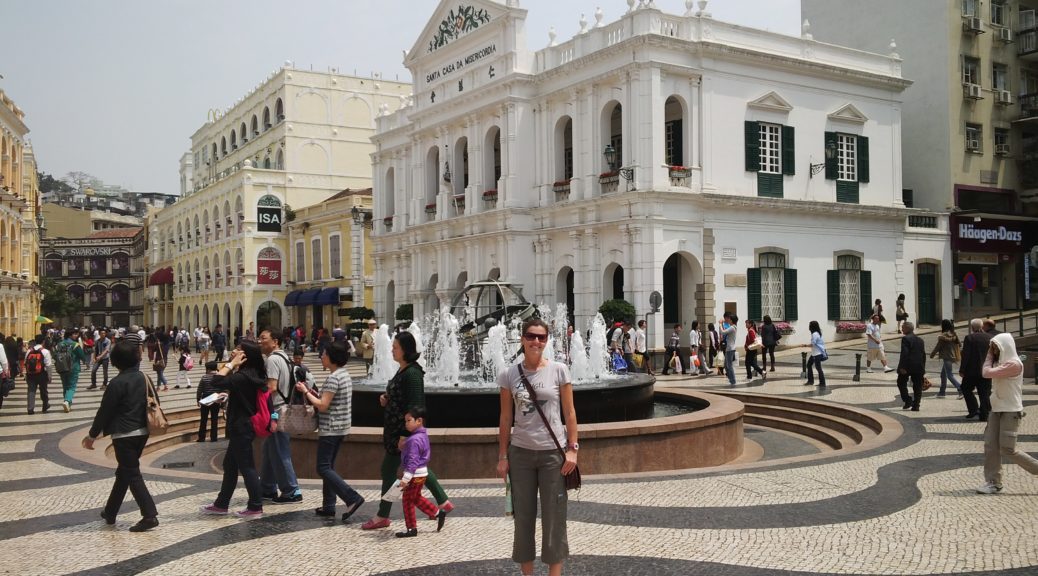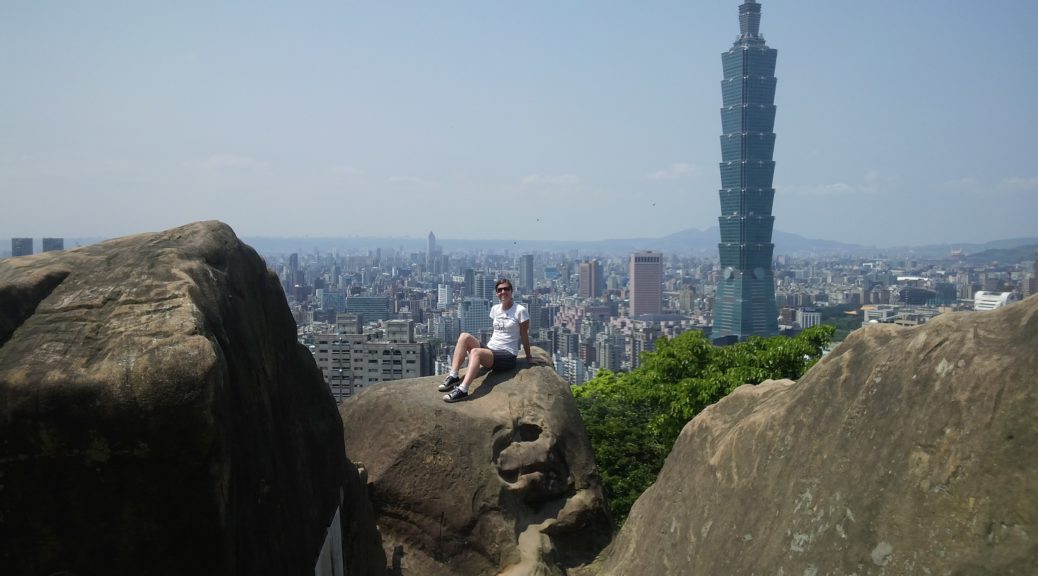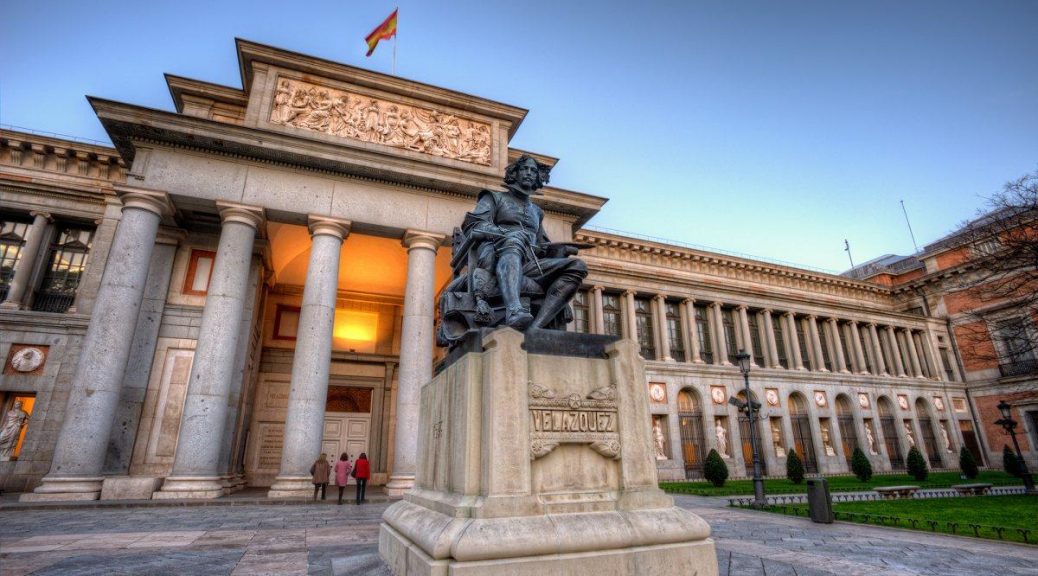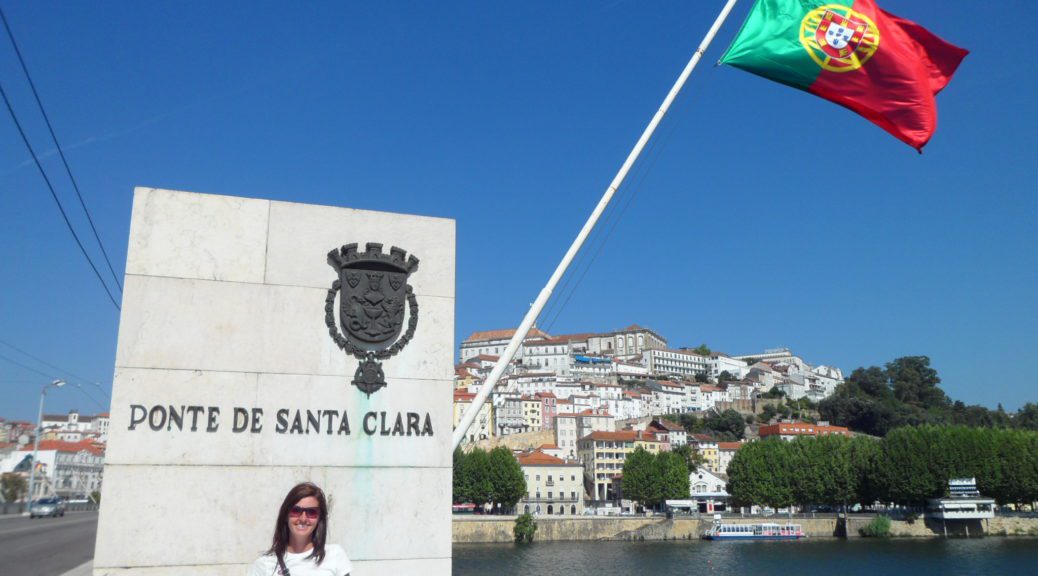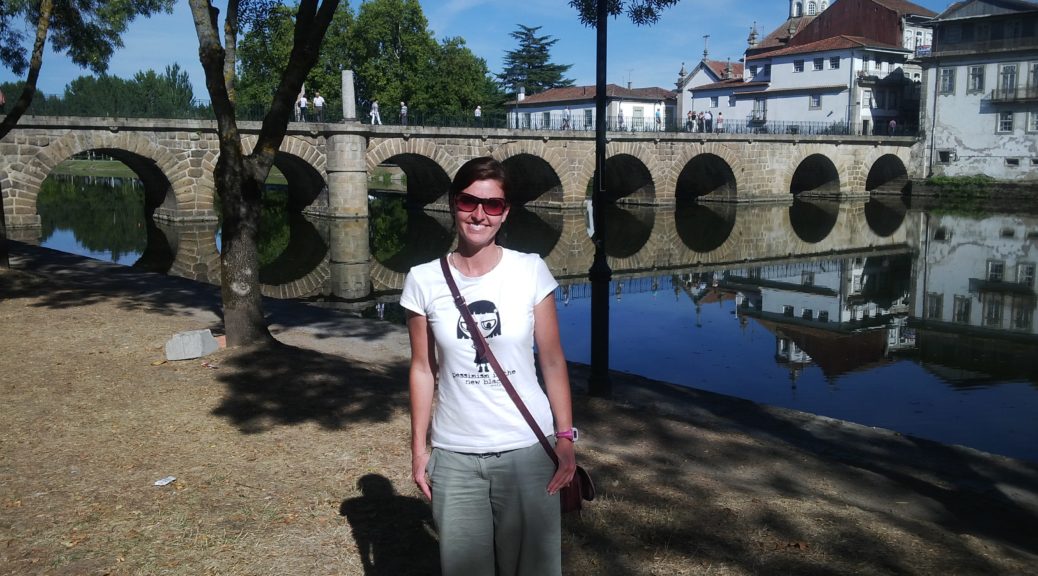HONG KONG ISLAND & KOWLOON
27-31 March 2014
Having pre-booked our ferry transfer to Hong Kong – for a very civilised 10h30 – our evac from Macau was quick and painless.
The breakfast buffet was quite different to the previous day, sadly missing the things we favoured (quiche, aloo curry, baked beans with sausage medallions) but still with enough basics (bacon, chicken sausage, eggs etc) and some new additions (French toast) to sate.
Fascinating to watch the bizarre combo of things such a diverse cross-section of people choose at these buffets. Not at all uncommon to see a single plate with a small portions of scrambled eggs, bacon, noodles, cooked veg, dimsum and fresh fruit… all eaten with chopsticks! Toast doesn’t seem to feature – likely because it can’t serve as the delivery vehicle it does when you’re using a knife and fork.
Chopsticks must be a nurture art of practice, as we discovered when the little Chinese boy (no more than 4 or 5) alone at the table next to us dropped something through his chopsticks onto his plate, setting off a domino effect that resulted in his glass of milk landing on his chair next to him and rolling onto the floor. He froze and his eyes went so big they were almost round! He was on the edge of tears. We quickly rounded up all the serviettes on our table and helped him dab most of it up, so by the time his mom got back from the buffet a minute later, there was little evidence of the carnage from the recent milk tsunami. Obviously the little chap wasn’t one to keep secrets though and soon mom was smiling, head-bowing and rapid-fire Chinesing obvious gratitude to us.
The ferry ride was quick and comfortable – and again, completely full – and an hour later we were deposited at the Hong Kong Island Central Pier.
First order of business was to collect our apartment key from our host’s tea shop, which a Google Maps search had indicated was two rights and a left from the station. Sounded easy enough… until we realised, as we had in Taipei, the station has several exits in different directions and starting the instructions with “head East” wasn’t largely helpful when your luggage is all shoes and no compass! So we jumped in a taxi, which took us exactly 1 block parallel to the station, but was worth the R45 to save the anguish of wandering aimlessly on the busy streets with our considerable luggage in tow.
The girls in the teashop revealed that our host was currently travelling in Shanghai, but were able to give us the apartment key, directions and instructions to leave the keys with the 24 hour doorman when we were due to leave on Monday morning (a relief to not have an extra chore to drop off keys as we were headed to the airport at 5am).
The directions were easy enough and we were soon at our apartment in Hollywood Street (famed for antiques shop and opposite the famous Man Mo Temple), with the only challenge being the 120 or so steep steps up Ladder Street to get there. Although it could’ve been way worse, seeing as Ladder Street continued to ascended as far as the eye could see!
Our apartment was tiny – no bigger than my bedroom at home – but well apportioned. Newly renovated and with TWO balconies (a long one running the length of the flat overlooking the street and a smaller square one running the width of the flat, off the side nestled into the building above the entrance hall), which has to be a coup in Hong Kong.
The bedroom was no more than an alcove built around the double bed; the bathroom a glass sliding door off the entrance passage with a shower, loo and basin. The kitchen area was a double cupboard with under-counter fridge, 2 plate stove on one side and small sink on the other. A convection oven the size of a small microwave sat on a rolling trolley island. Just enough to be able to do anything you need to do, not enough to really want to do anything. Presumably the locals have as big an eating out culture as the Taiwanese.
We put our bags down and hit the town, first port of call being to find the Gieves & Hawkes store in the International Finance Centre (commonly known as IFC) mall to collect Christian’s suits. Luck was on our side and our rough plan to head towards the water and take it from there serendipitously led us directly to the mall, and the store was at the top of the first escalator as we entered. More fortunately, the suits were perfect and looked great on! We asked the attendant to hang onto them so we could do a bit of sightseeing unencumbered and pick them up en route home.
We were in no particular hurry so, since we found ourselves at the central terminus, decided to take a bus up to The Peak, a shopping mall with viewing deck. As the bus wound up the mountain, the cars got flashier and the entrances more impressive. Clearly, the better the view, the higher the price tag!
The Peak Mall was nothing special in itself – perfectly lovely, with lots of restaurants and high-end shops – but boasted a rooftop terrace with gorgeous views of the far side of the island, as well as Lamma Island and Lantau (where we started our trip).
At the base of the mall was a viewing deck for the Victoria Bay side of the Island, with a winding walking path to get varied vantage points. Great spots to take pics (and selfies of course).
The Peak Tram runs from top of the walking path and had been recommended to us to try. We thought it would be a tourist activity but, based on the bussle and jostling, it appears to be a popular public transport alternative. It’s HK$28 for the tram as compared with the bus at HK$9.50, but only takes a couple of minutes – belting near vertically down the mountainside – versus the bus winding slowly and gently upward for 45 minutes.
Alighting at the end of the line, we consulted the map to see that we were at the end of the Causeway, which meant we had to walk the length of the pier to get back to IFC.
Hong Kong Island is easy to move around using a set of wide pedestrian skywalks that interlace all the malls and buildings, so you don’t need to contend with the shops and cars while getting from place to place. Since everyone seems to be in a hurry to get somewhere, this must be a godsend!
We navigated through the skywalks and back to IFC. We stopped en route to the suit shop to grab a sundowner at Liberty Exchange, a swank bar full of banker and stock broker types (and not an Oriental face in sight). The chap next to us at the bar spotted us to be tourists immediately and introduced himself. Of course, he turned out to be a Saffa – a chef who has been on HKI for 10 years and is now, funny enough, looking to move to Taipei. He’d never been there and we’d never been here, so we shared insights on where to go and what to see.
Suits in hand, we manoeuvered back to the apartment to drop them off and head out for the evening, to check out Wan Chai, which is infamous as the playground of the Sevens since it’s so close to the stadium.
The MTR metro system was particularly simple to master since it’s a single straight line that runs the length of the bay, so we were soon at our destination and being swept up in the throng.
The road is a mess of bars and clubs spilling onto the streets with touts and hostesses willing people in as they attempt to pass by. Lots of neon signage with flashing icons and logos fighting for visual attention. And lots and lots of lager louts soaking it all in and allowing themselves to be lured along a bar hop. Not surprisingly, most of the clientele was English, Irish, Aussie and Kiwi with the odd Saffa group.
We did a tour of the road – careful to avoid the notorious girlie bars with their curtained entrances (and unscrupulous billing tactics!) – concluding with dinner at the curry den at the top of the street.
FRIDAY
Friday had been allocated to Kowloon exploring, with no rush to head out since our Saffa friend had warned that HK is a city that starts late (11ish) but ends same. It was a simple journey since it’s only a few MTR stops from Central Station on Hong Kong Island to Mong Kok on Kowloon and we were deposited right at the entrance to the Ladies Market, which seemed as good a place as any for our sightseeing to begin.
Kowloon is grimy and cluttered. Not dirty exactly – obsessively swept so there’s no litter or garbage – but just a general grey and dingy feel. The buildings are completely unmaintained , which probably adds to the overall impression, along with the general clutter that comes along with so many people in such a confined space (to the point that someone told us that, should a fire break out in Kowloon, there wouldn’t be enough space in the streets for everyone to evacuate). Despite the impression our shopping bags might present, we were underwhelmed by Kowloon and keen to get back to the Island.
By stark contrast to Kowloon, we spent the evening in SoHo, which was made infinitely easier by our Saffa friend’s revelation of the world’s longest operational escalator, which runs up the hill through SoHo (or our adventures might’ve been severely hampered if relying on us ascending the steep – and seemingly endless – stairs on Ladder Street in foot!)
SoHo was teeming with people. Every establishment had loads of patrons – all Westerners – and there were restaurants themed to every nation and menu imaginable. Bars overflowed onto the central walkway and restaurants occupied every square inch of the little terraces carved out on the side streets. Very upmarket, with most dressed to the nines; proper inner city cosmopolitan with people clearly only arriving as we were finishing up for the night.
Our weekend itinerary had been dedicated to the Hong Kong Sevens Rugby tournament, so we were bleak to wake up to dark skies and rain on Saturday morning. We hadn’t yet managed to secure tickets – but were confident, based on popular opinion, that we’d get from touts around the stadium – so reconciled ourselves to the possibility of watching Saturday’s games in a pub and going to the stadium on Sunday rather. With new optimism for our win/win plan, we headed to our local, The Cottage Gastropub, for a breakfast pizza. What a great idea putting sausage, bacon, mushrooms etc on a pizza and topping it with fried eggs!
The combination of pizza and the spirit in the bar (which was of course showing the Rugby) we used a gap in the rain to dash out and head in the direction of the Hong Kong Stadium.
As soon as we surfaced from the subway station, we were approached with tickets for sale. Not wanting to be duped into fakes, we decided we’d only consider buying tickets right outside the stadium, where their validity could be verified at the gates. And there was no shortage of opportunity – lots of scalpers… and, weirdly, a good few people with “tickets wanted” signs. Why didn’t the people looking to buy, just buy from the hordes of people trying to sell to us? Justified our paranoia!
It was really easy to find the stadium: just follow the crowds and the loud cheering. Apparently, the weather hadn’t deterred the fans nor dampened the spirits!
On arriving at the stadium we saw the fanpark across the road and decided to give that a gander before committing to tickets (by now it was about 1pm, so we’d missed the first half of the day’s play thanks to the rain). The fanpark was brilliant! We managed to get ourselves a pair of pints and a prime-sited cocktail table – under a big umbrella – right alongside the main big screen, probably because we’d arrived during the break in play for lunch.
By the time play resumed, so had the rain and we were thanking our lucky stars for the umbrella, crushed in alongside our new friends (2 Englishmen based in Hong Kong and 3 Irishmen dressed in matching tutus and candy-coloured wigs). True to form on what we’d heard about the Sevens, it was lots of beer and laughs loosely set to the sporting backdrop. Spirits were high all round and the dress-up makes for superlative people-watching. What a fun way to spend an afternoon!
SUNDAY
Sunday morning was rainy, so we hibernated with our leftover Pizza Hut duo (we’d secured en route home the night before) and TV. Really good to get in some downtime on the last morning of what had turned out to be a hectic holiday!
At noonish we up and outed to the Sevens Fanpark at Central Pier. It was quite different to the one we’d been at on Saturday, with a funfair set-up as well as the big screen and food/drink stalls. Speaking the testament of the game stalls, there were lots of stuffed animals interspersed in the crowds and regular intermittent whoops of completely non rugby-related delight. A completely different vibe to the day before, but equally fun.
We rounded off the outing with a late lunch at SuperSuper – a fitting conclusion since it’s the same chain we’d had our first local meal at in Discovery Bay.
Then it was home to pack, which was easier than it could have been since Christian had bought a new suitcase (as well as the suits, our shoes and a bunch of other things). The bright side about our postage stamp apartment is that it was easy to pack up since nothing was more than a generous arm’s reach away!
We had been very lucky all afternoon since it had been quite clear of rain, then poured down while we were packing and, since it had stopped again, we thought we’d take advantage of the good fortune and take a walk up to SoHo for a farewell bite. With nothing even vaguely traditional tugging at our conscience, we threw caution to the wind and chose a cosy little Mexican restaurant, positioning ourselves at a corner counter window seat so we could watch people (helter-skelter, as it was raining again) on the main passageway as we ate our burritos, tacos and nachos.
An eye of the storm gave us enough opportunity to get home, via 7Eleven to grab chocolate milk and TimTams, the holiday snacks of choice – and the wisest nightcap option with our super-early start for the morning.
After a restless night, worried about sleeping through the alarm, we were up at 4.45. We were also worried about not finding a cab so early so had built in a bit of fat in case we might have to walk to the station (which we’d timed to be 8 minutes sans luggage). Turned out to be unnecessary and after a 2 minute wait, we were able to flag down the first cab to pass, right outside our apartment block.
Central Station is brilliant – the ticket office opens at 05h30 with the first Airport Express train at 05h50. The cherry on the top is the bank of airline desks where you can check-in and book through luggage. Genius! Except Emirates only opens at 7, which would have been too long a wait for checking into our 08h25 flight… and a good thing we hadn’t planned on doing that since our flight had at some point, unbeknownst to us, moved forward an hour to 07h25. We were very tight for time and in the sticky situation where any possible Plan B would take longer than the Express train!
Amazing how slowly time moves when it’s 05h35 and you realise you’re short an hour. And you’re waiting for the 05h50 train.
Amazing how quickly the minutes fly by when you’re on the train and the 06h25 check-in time is approaching.
We were very fortunate that the train deposited us right at the entrance to Terminal 1, and right outside Row G, as required. After a mad dash, 3 suitcases wheeling madly, we got to a blessedly non-existent queue and were checked in with no more than a minute to spare.
A happy ending (were it not for sacrificing breakfast at the airport in the time-crunching process) indeed.
